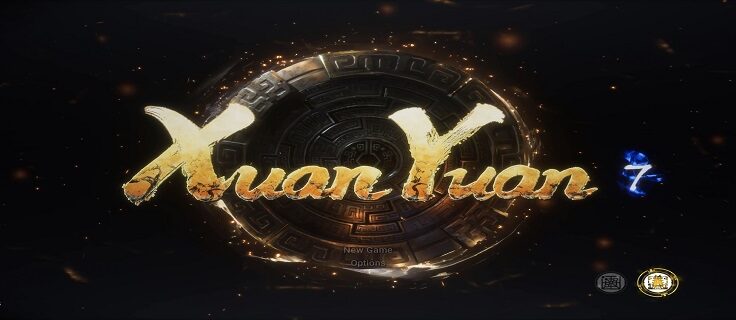A new Martial Hero takes the stage
Type: Single-player
Genre: Eastern Action RPG
Developer: Soft Star, Studio DOMO
Publisher: Eastasiasoft
Release date: 30 Sep, 2021


Solid but Overambitious
Xuan Yuan Sword is the older sibling to Sword and Fairy and is developed by Softstars internal veteran Taiwanese developer DOMO Studio. Xuan Yuan Sword is a more grounded story based on Chinese mythology and historic figures and events. Fun fact, it’s also the oldest and longest-running Chinese RPG Series. Xuan Yuan Sword 6 came out in 2013, while the spin-off The Gate of Firmament was released in 2015 (also available in English on Steam).
Xuan Yuan Sword 7 holds the longest rest period in the whole Series. Was the long wait worth it?
The Story
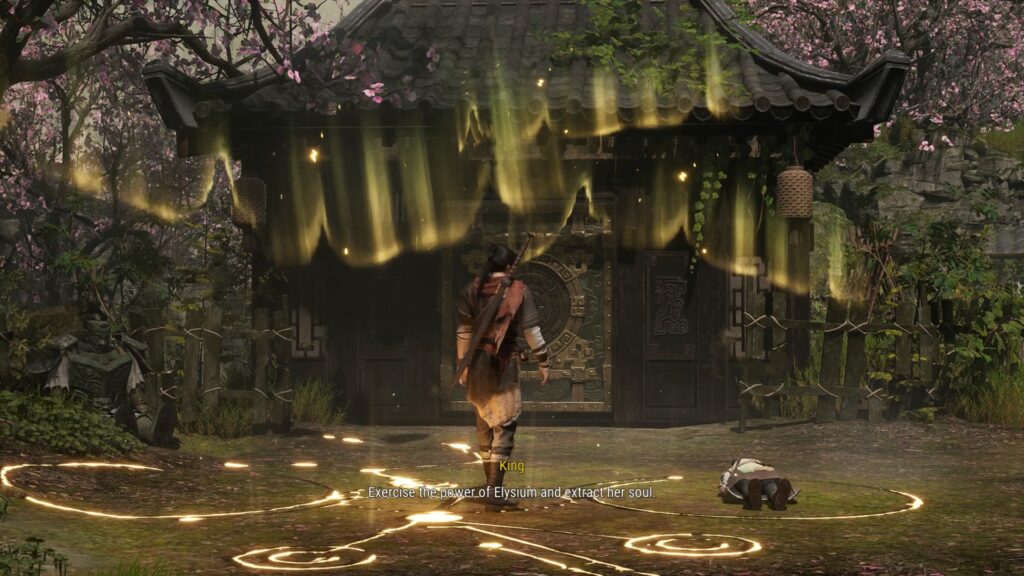
It starts with the main character’s childhood who helps his female friend to get the mechanical bird back, who presents him a unique small statue as a gift for his little sister Xiang. Unfortunately, the happy times come to an abrupt end as his home is getting raided and his family is killed by the Emperor’s Lijun Soldiers. Only two things managed to escape the disaster, our protagonist and his baby sister.
Fast forward over a decade and it’s seen that he’s living incognito with his sister far away in a village far away from the capital. Fully grown-up, he takes care of Xiang who has a weak body, and earns a living by accepting odd jobs. The difference is that this time the job is something else. Monsters and a black flame have been scouted in the area and he’s being hired by the Lijun Army to lead them to the place for a nice sum. Within the place, they manage to find a humanoid monster called the Mistwalker. It’s strong and the chief of the Lijun Army only manages to fend it off before it escapes.
Meanwhile, Taishi got thrown off the cliff from that skirmish is hurrying home. This is when another tragedy befalls him.
The Mistwalker takes his sister hostage to no avail since the Lijun are just chalking her up as another collateral damage. Though he tries his best to save her, she still is fatally wounded.
The good news is that he has the Elysium Scroll that lends him Bullet Time powers and a secret dimension where a wise person is imprisoned. He strikes a deal to free it in exchange for saving her.
Due to the help of that person, he manages to transfer her Soul out to transfer it to an Automata later on, while both of them are looking for a way to save the body.
Though this is the gist of it, there are two story’s intertwined with it.
The Lady in Green
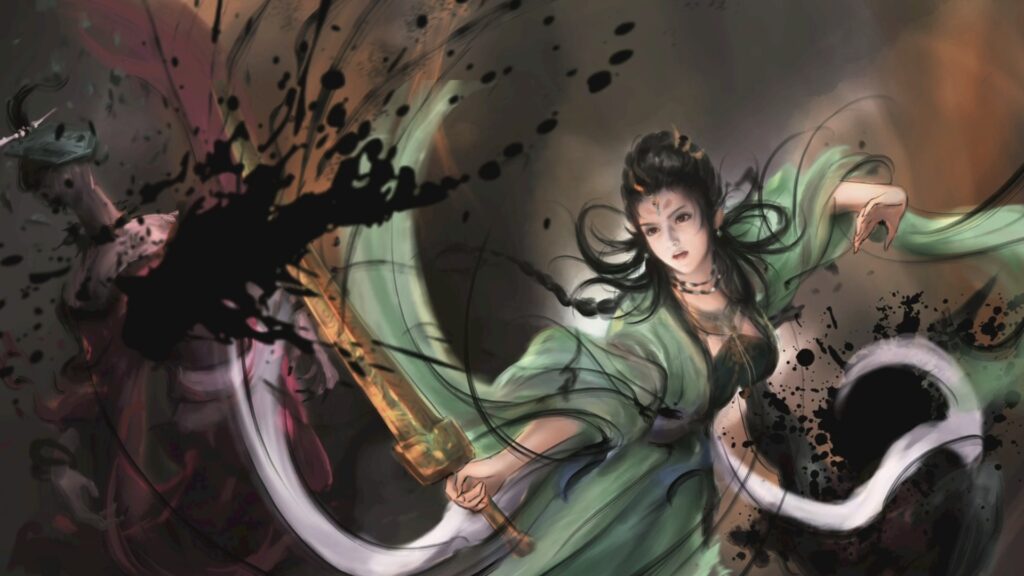
One of them is the Lady in Green who is shown to be fighting monsters for unknown reasons. The way her part of the story is shown is quite weird because her cutscenes are injected at specific parts of the story. Even stranger is the fact that these cutscenes are used 1:1 again close to the end as an explanation for her actions. It’s just a replay of the same things.
It makes no sense in the narrative and can confuses the player because it’s just out of nowhere. I have no idea why they thought it would be a good idea to inject them in the middle of the story when it was seemingly also planned for the endgame as an optional exposition dump.
A War in a teacup
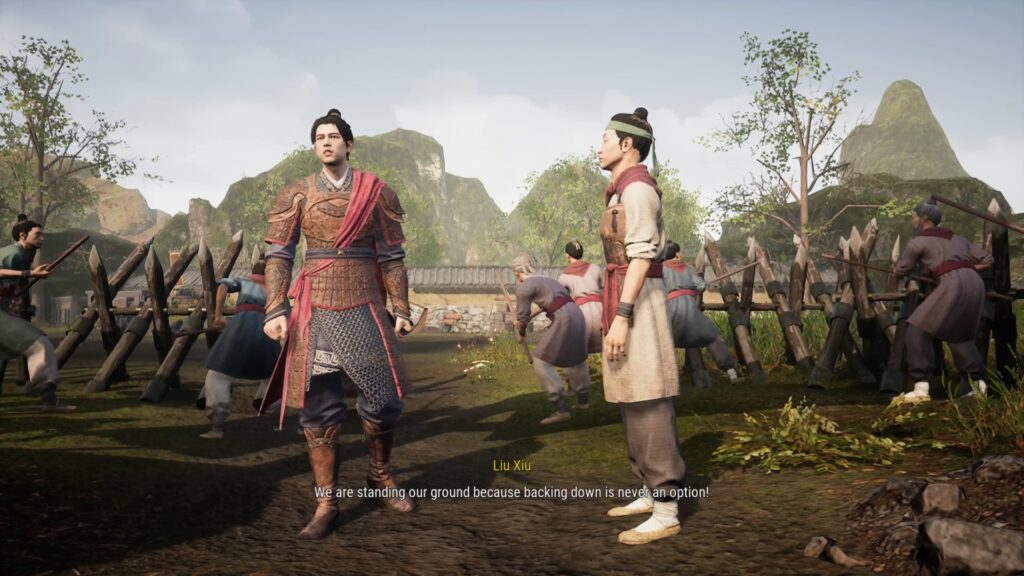
The second story is about a huge war between the Empire and the Rebels. Along the way, you get to meet the Rebels Generals and the faction’s questionable leader representing an uprising of the people. On the other hand, the Lijun Army that boasts advanced weaponry and technology represents the Empire.
Some of the sidequests involve the Rebels and their inner conflict, while the main story focuses on the Lijun Army as an enemy. You get to discover who they are and what their technology is powered with.
The biggest issue in this whole thing is that you don’t get to see the war at all. Not even in cutscenes. You get to see a small rebel army fending off a village monster attack at most. For reference, it’s mentioned that there is at least a 400000 people strong army but you never get to experience this scale. This war is a complete “tell don’t show” deal and therefore it feels like a storm in a teacup, despite its supposed magnitude.
One example would be a scene where you and the rebels are storming behind enemy lines. One would think we would get an epic scene but it’s just an Artwork showing them riding out and then skips forward to your arrival.
An Over-encumbered Epilogue
Once you’re done with the story, you’re forced to backtrack to special spots for a cutscene. This is nothing new and games such as Grandia II executed that superbly because it shows the changes to the world after the finale. Unfortunately, it’s not the case in this game. What we have instead is a backtracking galore for retrospectives. Without the support of the changes, all you have is a filler that feels like something that tries to squeeze as much playtime out of it as possible by adding an encounter for each spot. It’s also structured strangely. Sometimes you immediately get placed in the vicinity of the specified place and other times you have to go there manually. The epilogue is a nice idea but the execution is less than stellar.
Thoughts on the Story
Is it a bad story? Not at all. It’s serviceable with just a few things that are keeping it from being a good one. The Lady in Green’s storyline injection gives it a choppy or patchwork-like feel because some will get the feeling that they are simply out of place due to the lack of narrative support of why it’s being shown except them trying to explain something on the spot. They kind of fit in those moments but it’d be better if they weren’t there.
The war storyline is compelling but only has an auxiliary for the majority of the time. It’s a pity because some sidequests show not only that the Rebels leader isn’t that much better than the other side but that there’s also some internal strife. Other sidequests are giving a glimpse of the world’s situation such as deadly scams.
There’s also a strange moment where one of the characters went into an extreme out of nowhere with no noticeable setup or maybe just too subtle for me to catch.
Those who love to take in the lore are in luck. There’s a journal that offers some additional insight into places and enemies.
If they were to tidy up the script and find a better way to tie everything together, it could have been really good. As it is right now, it’s just good enough to keep some interest but it didn’t manage to make me feel invested.
Lastly, it seems there’s some direct connection to one of the prior games and after experiencing Xuan Yuan Sword 7 I’m interested to know the reaction of longtime fans because If I were invested in the old characters I think it would leave a weird feeling at least.
The Gameplay
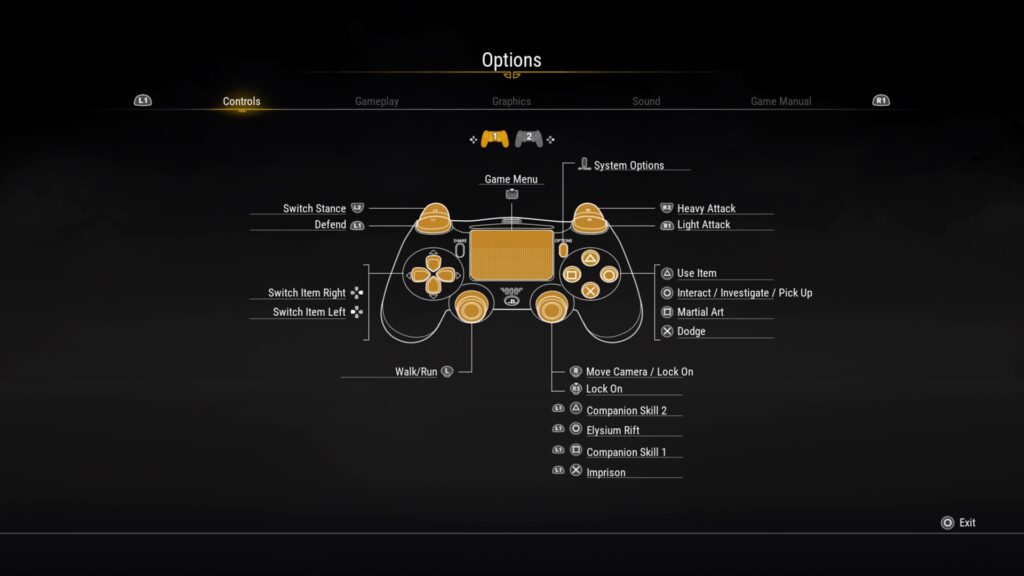
Quick Lowdown
It has similarities to God of War 2018. There’s no jump button, most actions are contextualized, climbing is heavily scripted, slight RPG elements, and an interconnected world. A handful amount of puzzles (I think less than 5) breaks up the monotony though they have a caveat. The combat also bears similarity but is much more basic and is most of the time simple attacking.
What stands out is the minigame Zhuolu Chess, which is a twist on the Nine men’s morris board game.
Zhuolu Chess
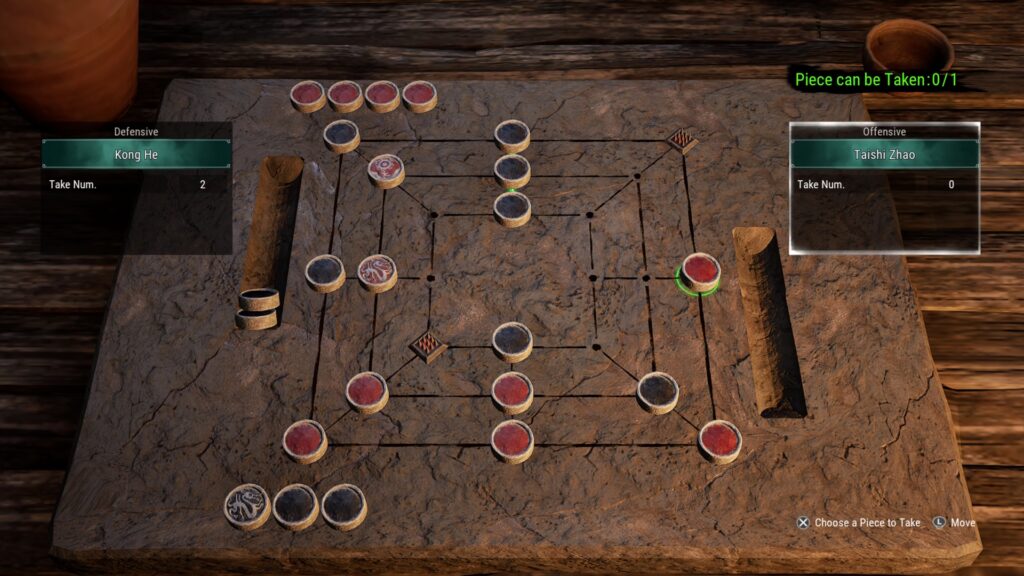
It consists of the same board as the Nine Men’s Morris board game but utilizes different rules. Each side has a limited amount of pieces and the goal is to get three in a line to remove one of your opponent’s pieces. The winner is the one who has removed more pieces. Each removed piece leaves a blocked spot.
You can’t move the pieces and the game ends when all of them are placed on the board.
The biggest twist are the special pieces that come with special skills such as being able to place it on a blocked spot. At the beginning of the match, you can choose up to 6.
You only begin with 2 but with each victory against the new challengers, you earn new pieces. The Zhuolu Chess Minigame is a sidequest and therefore automatically leads you to the next opponent, which is pretty much in line with the main story.
Tutorial
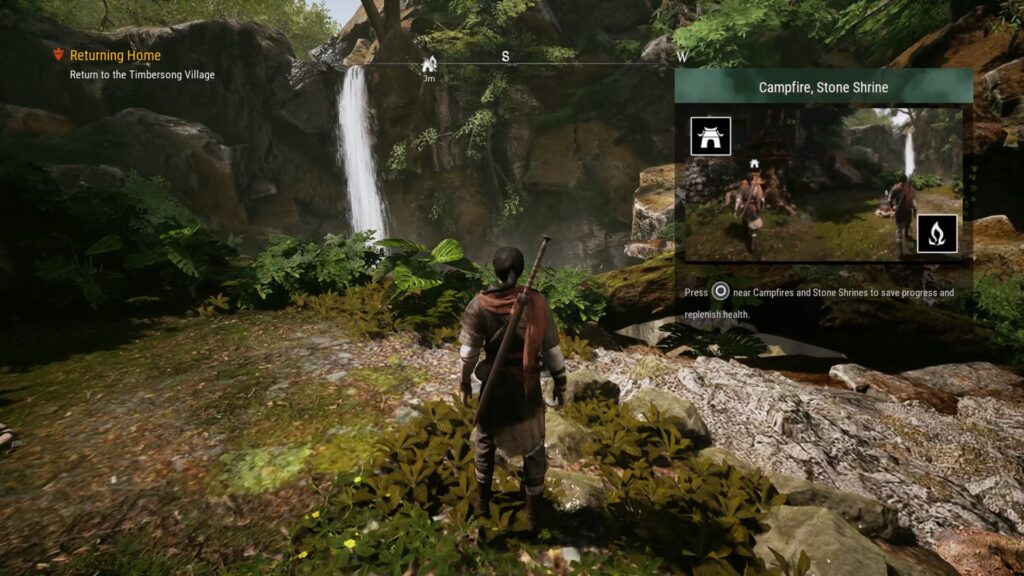
There are tutorial messages injected into the gameplay for first-time events that explain each part of the game. Some are even moving you through the menus with an example.
Traversal and Exploration
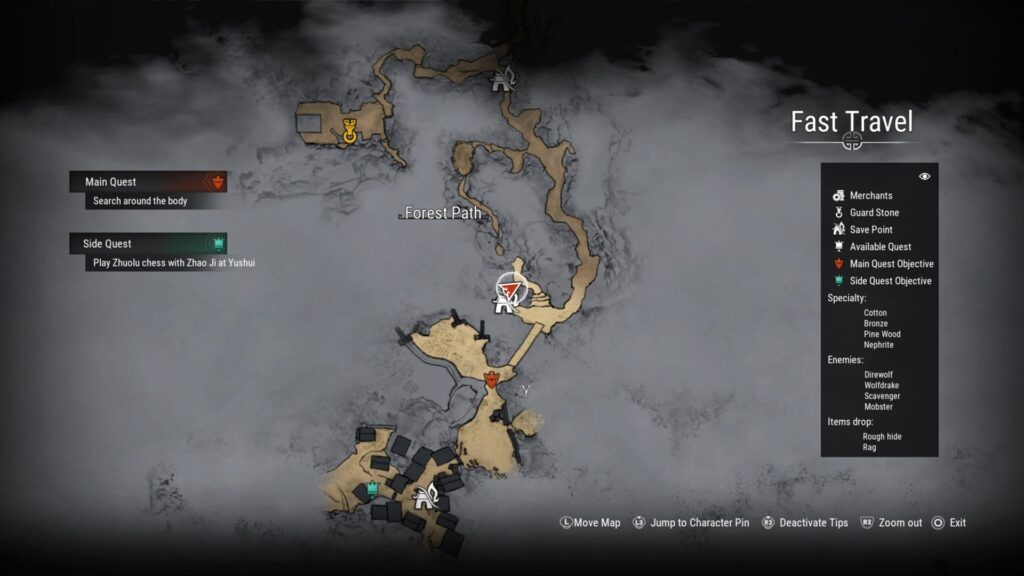
If you’re following the main story it’s going to be a very linear experience of going from point A to B without much trouble due to a marker showing your goal on the screen and there’s also a map that also has everything important marked like shops, open subquests, and regional loot. Exploration isn’t a big thing but you can find some chests, special statues, and breakables to get some additional loot. The most important thing to keep in mind is that anything that shines contains loot and should be attacked. I made the mistake to not attack some of the strange statues early on and missed some crafting recipes, crafting materials and money.
There are times you might want to go back to old locations to buy crafting materials or something you have missed and that’s where the teleportation stones come in. It’s as simple as unlocking them and using them for fast travel.
The only real thing that stands between you and your goal are enemies, the encounter frequency is on the modest side.
I’d like to mention that there’s no running option and repeated dashing is the fastest way to travel. It’s another weird design decision but it is what it is. Strangely enough, it doesn’t seem to be an isolated issue since it was the same with Ys: Memories of Celceta.
Villages
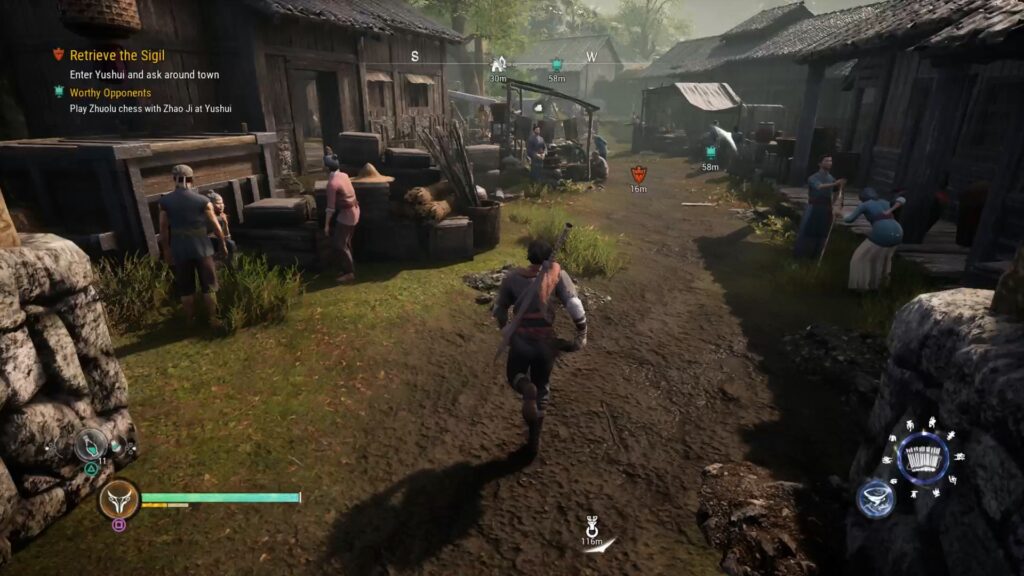
Are there towns? There is one that I’d reluctantly call a town otherwise you should only expect small villages and there’s not much to them. Its interaction is limited to a shop, a Zhuolu Chess challenge, and finding loot.
You can walk around and listen to some gossip for some extra lore but those are not interactive hence you can’t control the speed and I’d take a guess that most people won’t have the patience to sit those through.
Rest & Save Spots
Yes, it’s not a game where you can save anywhere. It’s similar to Final Fantasy X in this regard as save points are also capable of healing up your character.
Fireplaces have a separate Rest function since oftentimes you get to see some bonus interaction between the characters.
Puzzles
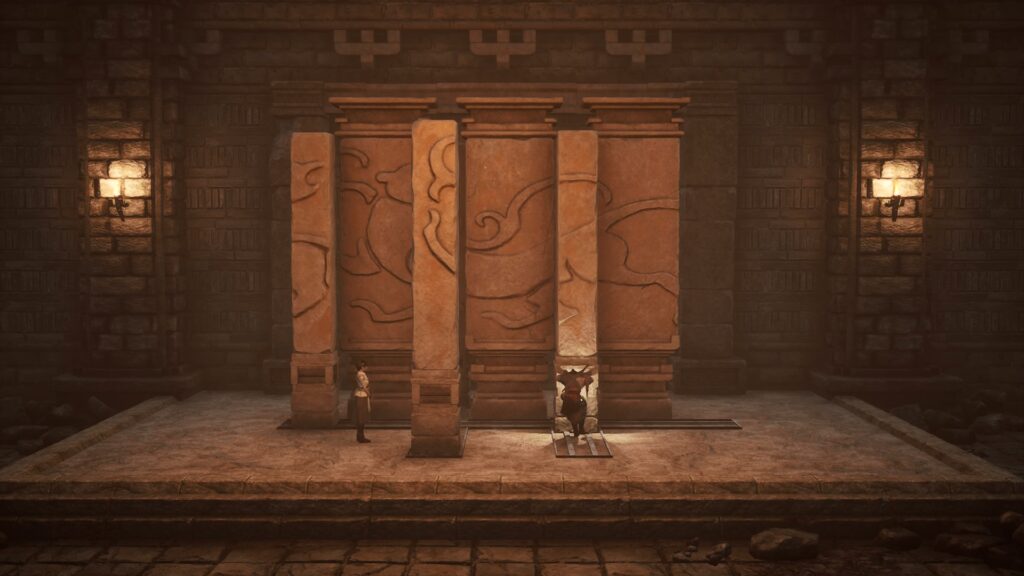
There are very few puzzles distributed across dungeons (I got 4 in memory). They are not difficult but require a little bit of observation because the hints are found inside the room. The logic behind the puzzles is not a problem but the real issue is the design execution.
At least 3 of them require you to push and pull something and it’s not fast, if you’re a trial & error type of puzzle solver make sure to bring a lot of patience because the animation is very slow. It doesn’t seem that big of an issue at first but when you start to pile up the moves it becomes very annoying.
One curious thing, one of the earlier puzzles even has a skip option.
Weapons, Armor, Accessories
All characters only have one weapon that is upgradeable along the journey. You can upgrade the blade, the handle, and the hilt separately. New armors can be purchased or crafted but they don’t change the visuals of the characters. You can equip up to 2 Accessories that offer some slight variation in character build but not that much.
Harnessed Soul
The highlight of the equipment though it’s technically not counted as one because you utilize captured Souls to craft ones that you can equip and give you specific buffs. You can upgrade each one up to 3 times within the Elysium which is done by depleting materials.
Harnessed Souls are much more varied and therefore are much more important in customizing your character. They can buff damage on certain attacks or simply buff stats. Make sure you got to the Talent category to equip them. Taishi can equip up to 5 depending on his level while support characters can equip 3.
the most important ones, which work against one of the 3 big status ailments.
Status Ailments: Bleeding, Burn, and Poison
These three require a special mention because they are extremely potent and even guarding won’t shield you from them. All three of them will deplete your HP in a very short time to 1 HP. The effect is so potent that even a healing potion won’t be able to help you out. It’s not an exaggeration to call them a precursor to your downfall. All of them have the same terrifying function.
There’s an accessory that helps but your go-to option is Harnessed Souls because a fully upgraded one turns the table on them. Instead of harming you, the status effects heal you instead.
Now imagine a boss battle that utilizes them frequently. It becomes nearly impossible to beat it due to that but once you get the respective Harnessed Soul it became a piece of a cake because their attacks heal you up instead after the initial inflicted damage.
Elysium
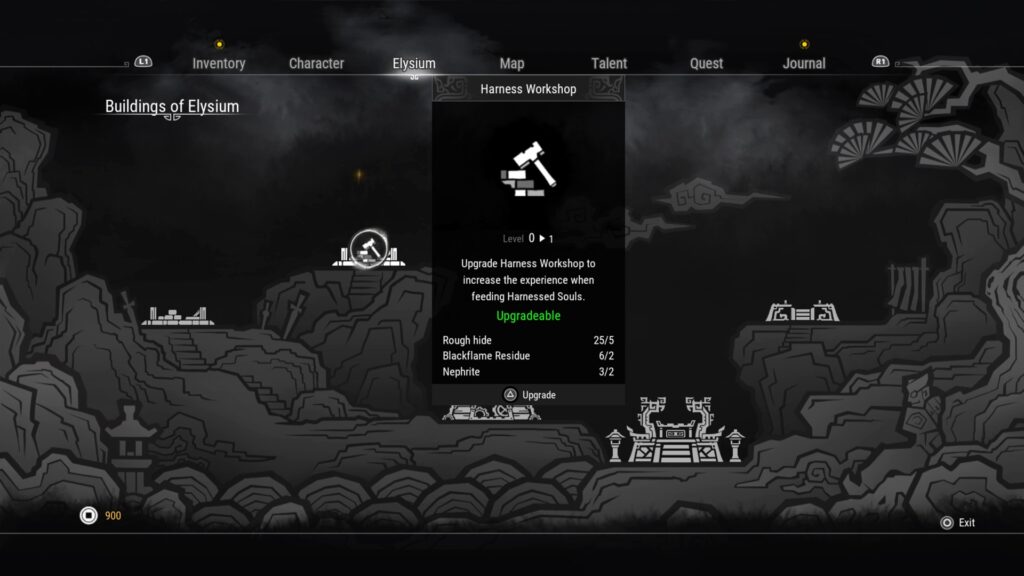
This is one of the biggest features of the game. The Elysium is a pocket dimension within the main character’s Scroll where he can craft Armor, Accessories, Upgrade Weapons, and Harnessed Souls with each of them having their individual workshop.
Each Workshop is upgradeable and requires Materials just like crafting. The final upgrade requires an individual special material.
It’s easy to use and the decision to make it into a simple menu is very appreciated.
The Combat
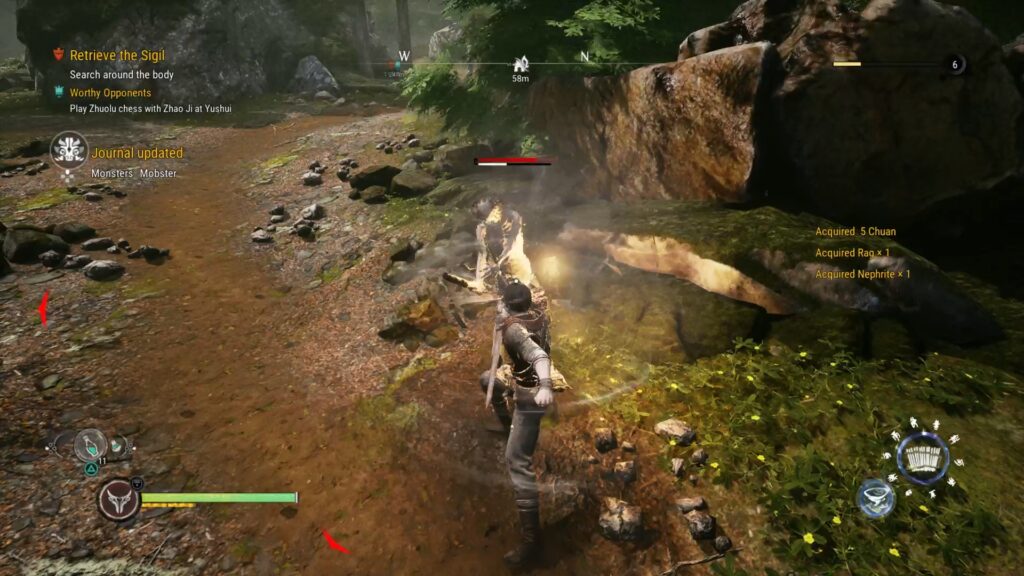
A very simple combat system consists of focus attacking an enemy with a stun lock attack style until they are down. There are two ways to defeat mooks, either you deplete their HP or you fill up their Stun Gauge and activate an execution attack with the Lock-On button. Bosses also have stun gauges but the execution takes only a small bit of HP, the real purpose is to unleash a combo string into execution for maximum damage.
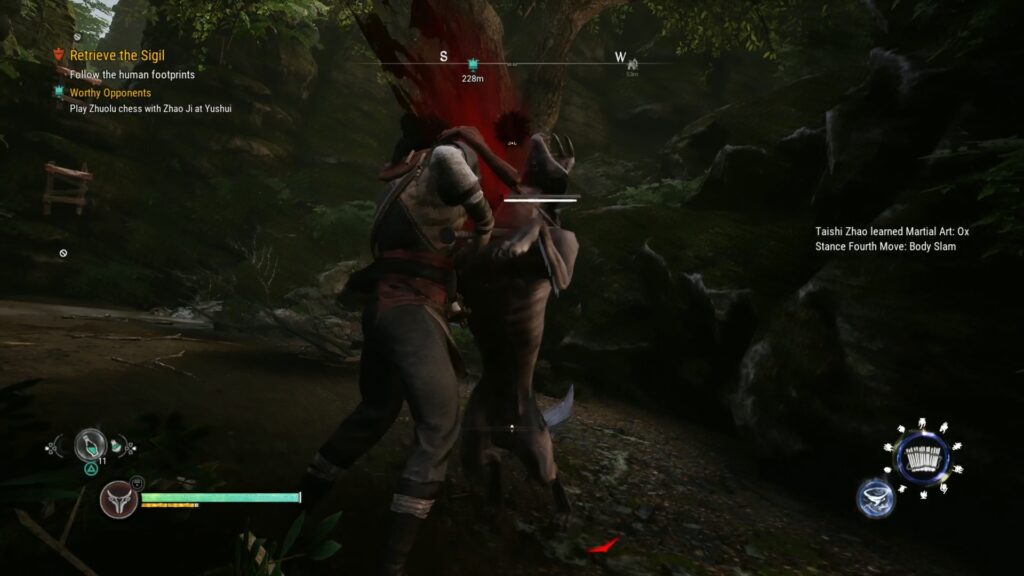
This is the gist of it but there are some finer details to go into.
Stamina
This is a strange one because it utilizes a stamina system but at the same time, they are very generous with it to a degree that I don’t get the point of its inclusion. It depletes very slow and recovers very fast.
There are times where it ran out in my playtime but that’s only when there’s a bigger mob or at boss battles but the forced breaks in the offense are more of an annoyance than something you have to take into account strategically.
You can also find special collectibles that increase your stamina.
Dash/Dodging
The typical dodge function comes with two restrictions. It takes a little bit of stamina and your second input actives a slower dodge roll.
Guard and Perfect Guard
Guarding is very viable in this game though it only reduces the damage by a lot. Wait for the opponent to attack, tank it with a guard and restart your offense.
If you’re confident you can try for a Perfect Guard that requires you to block right before the attack hits. It completely neutralizes the attack and lets you execute a counter that deals bigger damage and stun. There are some trickier attacks where it’s better to dodge, especially multi-hit attacks that break your guard and follow up with further attacks.
Attack Styles and Martial Art
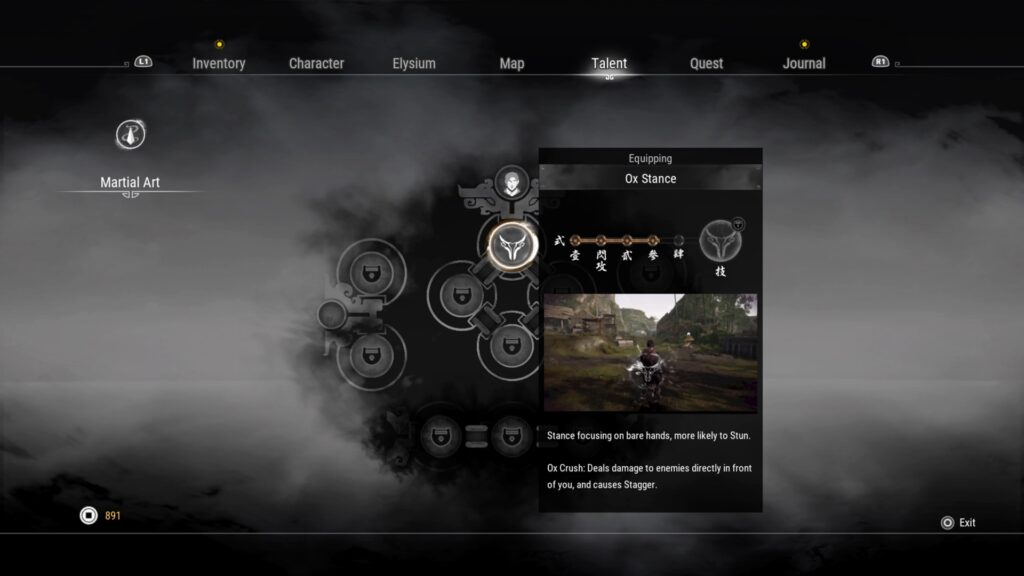
You can equip up to 2 Attack Styles within the Talent Menu and you can switch between them in real-time but beware there’s a little stance animation for each switch that leaves you vulnerable. Some cover more range but are slower, do more damage, do more stun, or do big damage and stun. Most of them are unlocked along the way. Is there a narrative reason for this? Nope. It just happens for most of them except monster styles. 4 basic ones and one monster style are unlocked through story progress.
The monster styles are slow but offer much bigger AoE than the basic styles.
You can unlock 2 monster styles through optional boss battles. They are very strong and I recommend challenging them when you’re at higher levels with higher stats. Otherwise, they can one-shot you. Are they worth it? Definitely.
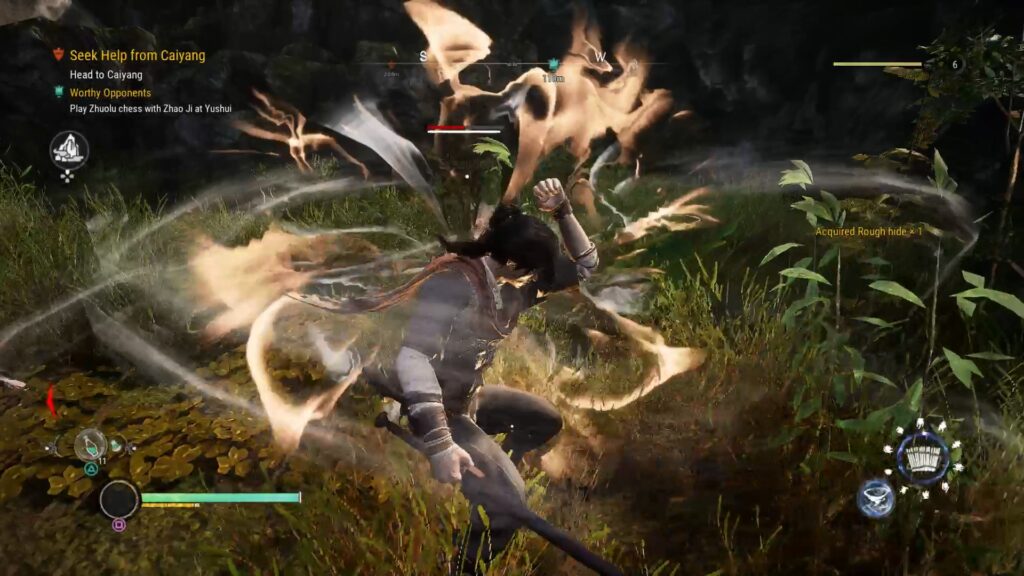
Each style comes with a unique Special Attack called Martial Art. Each usage puts them on cooldown and it takes some time for them to refresh. The cooldown isn’t too long but also not that quick in a fight against mooks you won’t get to use them twice because by then they are already down. Boss battles take way longer and therefore it’s very likely that you get to its second use. These attacks are strong and have most of the time good range.
Keep in mind that you aren’t invincible when executing it but it does slow down the time making it less likely to get interrupted. If you pick a bad moment you will get hit out of it and wastes the attack.
In addition to Attack Styles, you also have an attack button that rains down a universal standard combo.
Imprison and Elysium Time
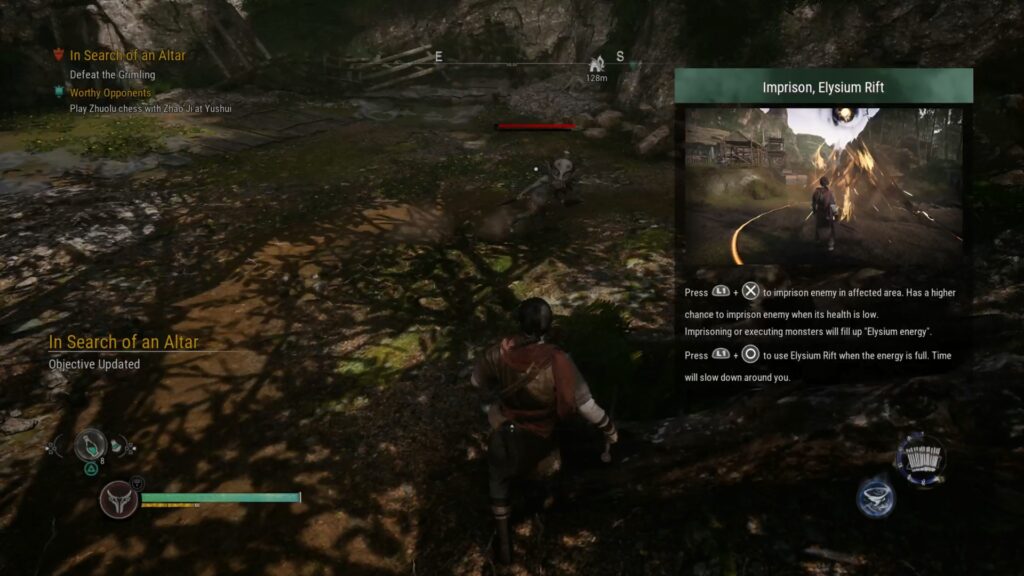
Taishi has two fixed special moves. Imprison is like a reverse Ghostbusters trap that is in the air instead of the ground. Keep the enemy inside and wear them down to imprison their souls for crafting. There’s no chance for it to fail just wear them down or kill them. It has a relatively short cooldown and it’s recommended to pair it up with a Martial Art so you can wipe out a group of enemies. The area of Imprison is relatively small so you have to keep that in mind as well.
With each kill, you’re going to fill up the second special move that slows down time and lets you rain down damage for a little bit.
Special Team Assists and Team Members
Just like the two prior moves you activate them in combination with the guard button. By inputting the Team Assist you tell your AI-controlled party member to execute it. Pretty much like a Martial Art.
Your team members are fighting with you but are also prone to get downed by stronger enemies. It takes about one minute for them to get back into action.
Thoughts on Gameplay
The first thing that comes to my mind is: It’s perfectly serviceable and inoffensive for the majority of the time. There’s not much that stands out but also not much that turns it into a bad experience. There’s no platforming, the level design is linear and the annoying things don’t last that long. The Combat is simple that has some slight depth due to the defensive options.
Graphics and Sound
Xuan Yuan Sword 7 is probably the best-looking Softstar game so far by using Unreal Engine 4. It’s pleasing to the eye in effects and texture work. The real standout is the Chinese culture and the resulting striking visual design in the environment, enemy design, and gestures. You can feel the difference between something like Jade Empire and this.
There’s nothing much to say about the combat in both regards. It looks and sounds fine.
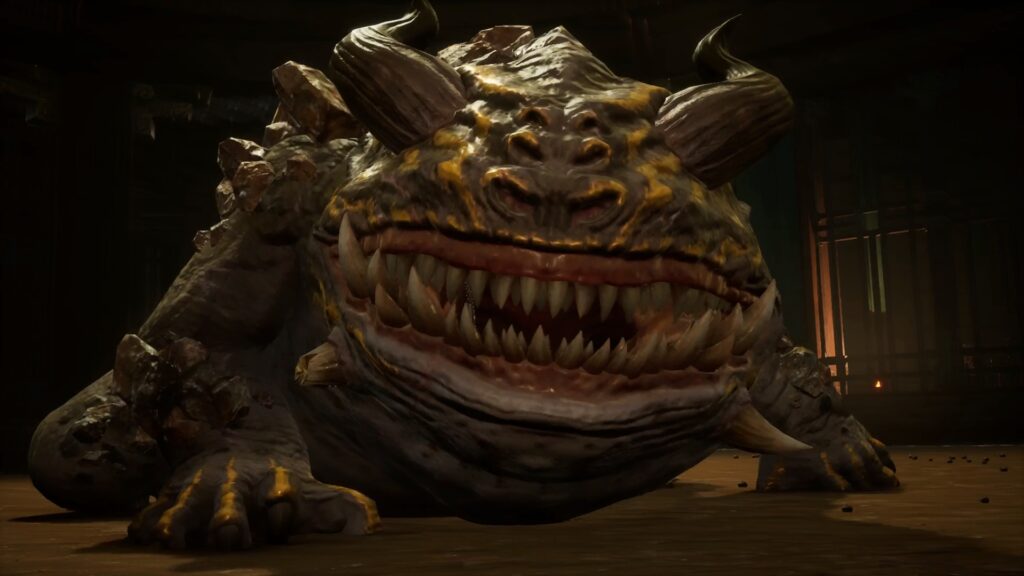
The same thing applies to its music as it often uses traditional instruments (in addition to the common ones) such as the Guzheng, Erhu, and Bamboo Flutes giving it a distinct feel. Just like Sword and Fairy 6, the voice acting is only in Chinese mandarin but even if you don’t understand it, they manage to bring out the emotion of the characters befitting the situation.
Verdict
Xuan Yuan Sword 7 is an entertaining but also mostly unremarkable game that tries to follow the footsteps of giants when it comes to gameplay. There is some interesting story to be had but it is lacking a little bit in depth and world-building for newcomers to the series.
It should take about 15 to 20 hours for a normal playthrough with finishing a majority of the sidequests and optional bosses. Those who take a liking to it can look forward to a New Game+ with a little bonus.
Overall, I had an enjoyable time with it but the pricing is a little bit high (49.99 $/€) for what it offers. Let me be clear the rating is for the console version. The PC Version on the other hand is already in the budget priced range (29.99 $/€), which would net it a Save instead.

